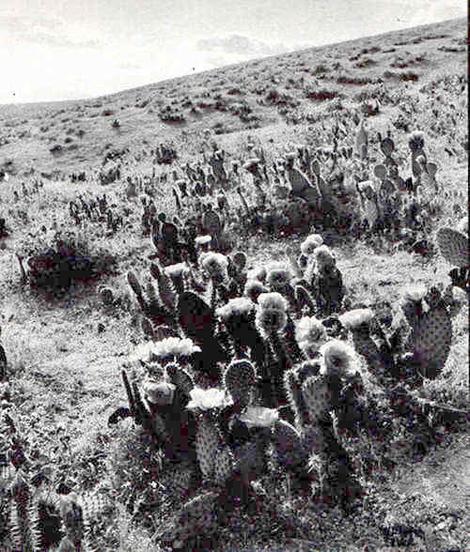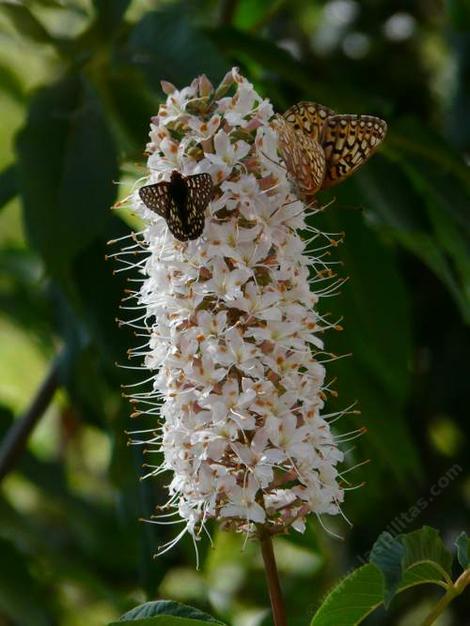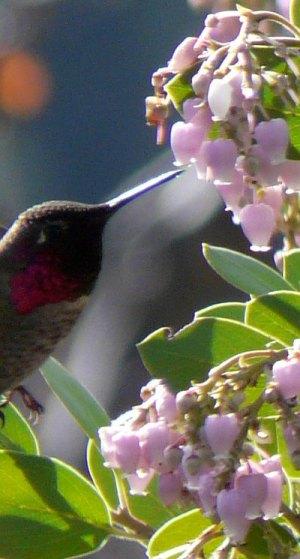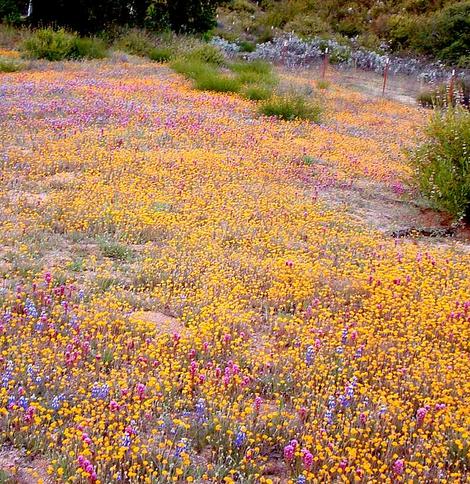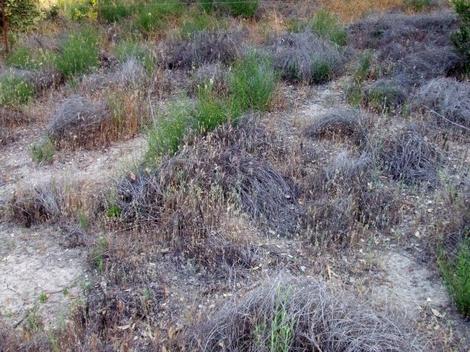Native plants
A native plant is a plant that evolved in an area before modern humans or their animals wandered through....
In California that's somewhere between 1400 and 1500. It's really hard to be site specific about the time or what plants were there in much of California as native plants in some areas were completely replaced by weeds, fire, and other activities of man.
All we grow are California native plants. Have for almost 4 decades. That means we grow plants that grew within the boundaries of the state line in the year 1400 A.D. The Native Americans didn't move plants about much; a little, but not much. The first Europeans brought wild oats, filaree and other weeds and contaminated vast areas of the state in a few decades. The hillsides could then burn much easier. Many of the images of California taken by the first cameras show that in the late 1800"s the hillsides were nothing but black from fires. No trees or shrubs left. It's hard to figure how anything has survived our onslaught on nature.Plants like some of the Ceanothus (mountain lilac), Arctostaphylos(manzanita),and Quercus (oaks) range into neighboring states, and although the genetics are not a perfect match and the plants may not do as well as plants from your area, they are still closer than plants from other areas that never grew there. That is, a Black Oak (Quercus kelloggii) from Eugene, Oregon is going to have different tolerances and requirements than one found in Mesa Grande in San Diego County. But if you want to plant a Black Oak on a north slope in Redlands and you can't find a nursery that grows any in your area, either the Oregon or San Diego tree would be better than a Northern Red Oak (Quercus rubra) from Michigan.
In your garden, the closer you can get to what should grow there, the less problems you'll have with , soil conditions, rainfall, temperature, humidity, and herbivores like deer, etc. Even though Redwood trees, (Sequoia sempervirens) are native to California, they can only exist without water in the areas where they historically grew. Now that is much of the coastal areas of California from about San Luis Obispo north, but it is not Bakersfield, Barstow or even Los Angeles. It gets even more ridiculous when planting a native plant from Michigan in your California garden and declaring it native. No, it's not. It's a Michigan native plant, not a California native plant.
There are a lot of little things that depend on the native plants that are supposed to be in your area. There are bacteria, fungi, bees, butterflies, ants and birds that depend on the native flora of your area to survive. Remove the natives and you remove the birds and butterflies. The common replacements are flies, rats and roaches.
The wildlife are much better supported if you use plants from your flyway or area. An example is the Buckeye (Aesculus californica). Many of the native bees, bumblebees, flies and butterflies use the nectar and develop protection from the nectar, where the European honey bees die from the nectar. AND, Buckeyes have a reputation for poisoning animals and people, but that rarely happens, as in almost never (once?), but alien filaree, though introduced as a major forage plant for cattle, has been documented as responsible for killing 60 head of cattle (McClintock, 1998).
Native plants are commonly misunderstood and have all sorts of misinformation applied to them. Think about when you walked through a truly wild area with no weeds, wasn't it nice?
Science is not absolute; it is the best description of the facts. "The only things certain in life are death and taxes" (Benjamin Franklin), and they're now beginning to question what is death.
You do not have to go far to be completely surprised by the natives.
